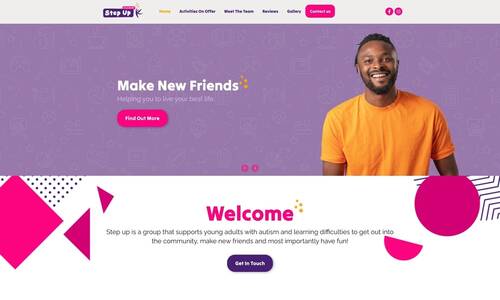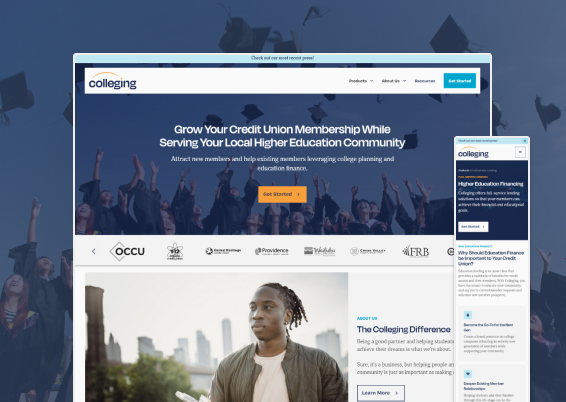Achieve Online Success With User-Friendly Site Style
In the progressively competitive electronic landscape, the style of an internet site can be a critical consider establishing an organization's success. User-friendly style not only improves the general customer experience but also affects key metrics such as engagement, conversion, and retention rates. By prioritizing user-friendly navigating and accessibility, organizations can cultivate an extra inclusive atmosphere that interest a broader target market. Nonetheless, recognizing the certain concepts and functions that add to efficient design requires a closer examination of existing patterns and finest methods, which could disclose opportunities for considerable renovation.
Importance of User Experience
User experience (UX) plays a crucial role in the success of a site, as it straight affects user contentment and involvement. A favorable UX makes sure that site visitors can browse the website easily, accessibility details rapidly, and complete wanted actions, such as buying or signing up for an e-newsletter, without irritation.
In an electronic landscape where competitors is fierce, a site that focuses on UX can significantly improve brand name commitment and retention. Users are a lot more most likely to return to a website that uses a smooth experience, developing a cycle of repeat brows through and boosted customer lifetime value. Effective UX style can decrease bounce prices, as individuals are much less inclined to leave a site that fulfills their demands efficiently.
Additionally, search engines progressively consider user experience variables when ranking sites. Therefore, spending in customer experience is crucial for accomplishing long-lasting success in the electronic industry.
Key Concepts of User-Friendly Layout
A successful easy to use design rests on numerous essential concepts that boost usability and ease of access. Is simplicity; a clutter-free interface allows users to browse easily, minimizing cognitive lots. This principle stresses the significance of clear and succinct content, enabling users to discover info promptly without unneeded disturbances.
Consistency is an additional vital part. Regular usage of layouts, font styles, and colors cultivates familiarity and builds count on. Individuals should really feel comfy as they explore different areas of the website, recognizing that similar components signify associated performances.
Effective typography additionally plays a crucial function in easy to use layout. Understandable typefaces, appropriate sizes, and ample spacing ensure that content is easily understandable throughout different devices. In addition, including user-friendly aesthetic power structures aids users determine vital information and actions at a glance.

Crucial Features for Navigating
Reliable navigating is vital for any straightforward web site, as it directly impacts the general customer experience. A well-structured navigating system enables individuals to find details swiftly and successfully, lowering aggravation link and boosting interaction.
One important attribute is a intuitive and clear food selection that classifies content logically - website design copyright. This food selection must be easily accessible additional reading from every page, frequently positioned on top or on the side of the internet site. In addition, integrating breadcrumb navigating assists users comprehend their place within the website hierarchy and makes it much easier to backtrack
Look capability is one more vital component, allowing individuals to discover details content without sorting with multiple web pages. This feature should be plainly presented and responsive to variants in input.
Furthermore, a mobile-responsive design ensures that navigating continues to be smooth across gadgets. As mobile usage remains to increase, menus need to adjust to different display sizes without endangering capability.
Finally, visual signs such as highlighting the energetic page and making use of hover effects can enhance customer communication. By incorporating these vital attributes, web site developers can develop a navigational experience that is not only user-friendly yet also urges exploration and retention.
Availability Considerations
Ease of access factors to consider are indispensable to creating an user-friendly internet site that provides to all individuals, no matter of their capabilities or handicaps (website design copyright). Websites need to be designed to ensure that users with visual, auditory, cognitive, or electric motor impairments can involve with material properly. This begins with adherence to the Web Material Access Guidelines (WCAG), which provide a structure for making digital material extra accessible
Key practices include using great site descriptive alternative message for photos, guaranteeing color comparison proportions satisfy accessibility criteria, and supplying subtitles for multimedia elements. Additionally, the navigation should be user-friendly, allowing users to tab through links and interactive aspects quickly. Executing keyboard navigation is important for those not able to use a computer mouse.
Additionally, succinct and clear language enhances understanding for individuals with cognitive limitations. Types should be simple, with tags and guidelines that are understandable. Regular access screening, including customer feedback from individuals with handicaps, can help boost and recognize obstacles functionality.
Measuring Design Success

Individual comments studies and functionality screening are crucial in evaluating the efficiency of layout components. These methods permit designers to collect straight input from customers, recognizing discomfort points and areas for renovation. Additionally, tracking heatmaps can reveal where users click most regularly, assisting to inform format adjustments and content prioritization.
Analytics devices play a crucial duty in determining design success by offering data-driven insights. For instance, Google Analytics can track individual behavior, exposing patterns that indicate whether the layout is preventing the user or assisting in trip. Ultimately, a successful site design not just meets organization goals but additionally cultivates a enjoyable and smooth customer experience, driving involvement and commitment with time. Frequently taking another look at these metrics makes certain that the website progresses abreast with user demands and sector finest methods.
Conclusion
Prioritizing individual experience with simplicity, intuitive navigating, and efficient comments mechanisms not only improves user engagement and satisfaction however likewise cultivates brand name loyalty. Incorporating necessary navigation functions and access factors to consider even more makes certain that all users can effectively engage with the site.
Websites must be developed to guarantee that users with aesthetic, auditory, cognitive, or electric motor disabilities can involve with content efficiently.Gauging design success entails reviewing exactly how properly a web site satisfies its intended objectives while offering a positive customer experience. Google Analytics can track customer actions, disclosing patterns that show whether the design is helping with or preventing the individual trip. Ultimately, a successful internet site layout not only fulfills service objectives yet also promotes a seamless and pleasurable customer experience, driving involvement and loyalty over time. Prioritizing individual experience via simplicity, user-friendly navigating, and effective feedback devices not just improves customer interaction and fulfillment however additionally fosters brand commitment.
Comments on “Website Design in copyright: Affordable and Effective Solutions for All Industries”